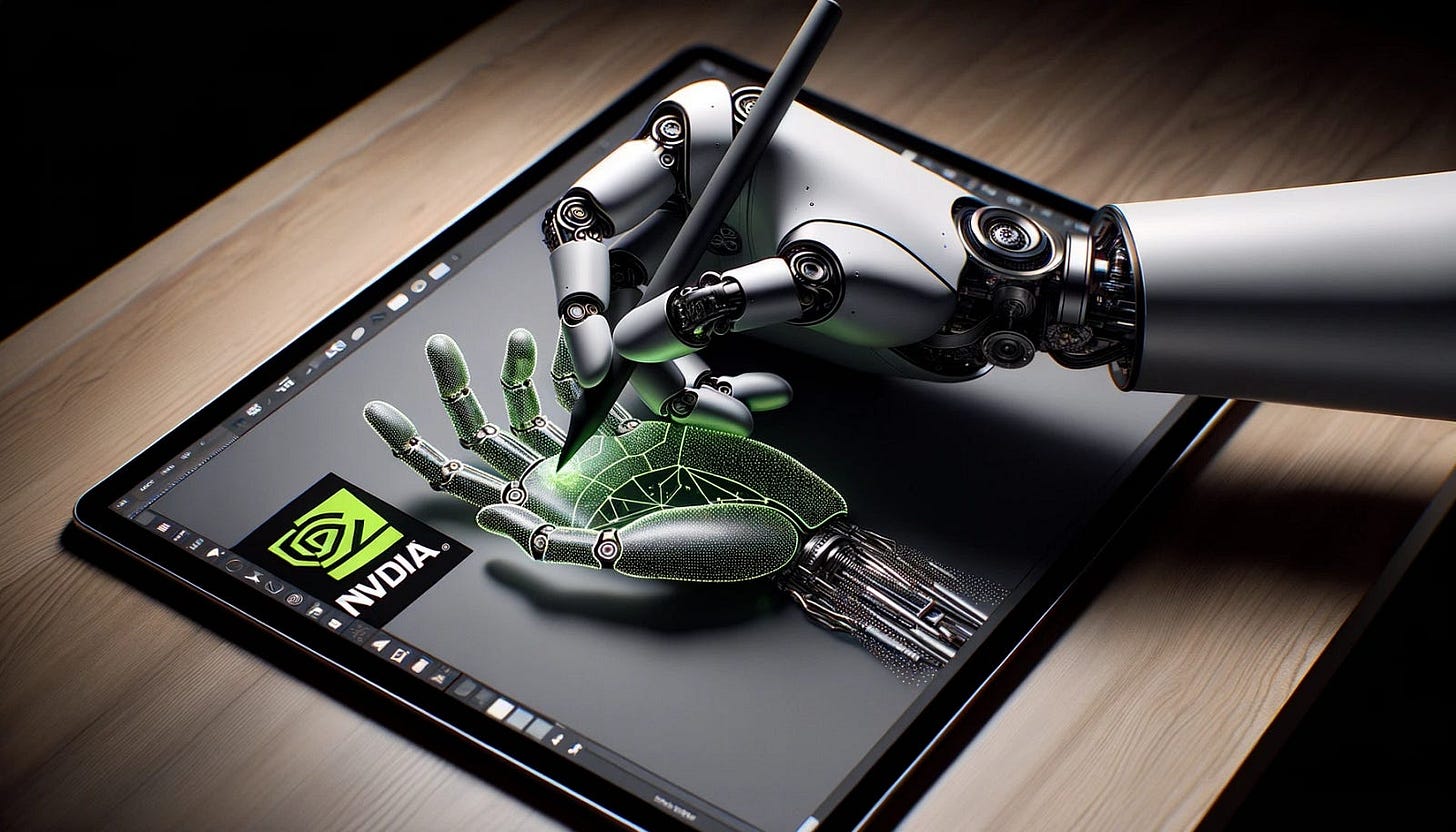Nvidia’s Eureka: Elevating Robot Dexterity with AI Mastery
Nvidia, a frontrunner in AI innovation, has achieved a remarkable feat in the realm of robotic dexterity, thanks to Eureka, an AI agent touted to teach robots intricate skills with the finesse of humans.
This groundbreaking technique, detailed in a recently published paper, builds upon recent advancements in large language models, particularly OpenAI’s GPT-4. Eureka harnesses the power of generative AI to autonomously craft sophisticated reward algorithms, enabling robots to learn through trial-and-error reinforcement learning. Astonishingly, this approach has proven to be over 50% more effective than human-authored programs, as outlined in the paper.
Eureka’s capabilities extend far beyond parlor tricks. Nvidia proudly states that Eureka has successfully instructed a wide array of robots, including quadrupeds, dexterous hands, cobot arms, and more, to perform tasks ranging from opening drawers to using scissors and even catching balls, encompassing nearly 30 different tasks.
This achievement marks the latest testament to Nvidia’s pioneering work in harnessing language models to steer AI. Recently, the company introduced SteerLM, an open-source initiative aimed at refining AI assistants by training them with human feedback.
SteerLM, much like Eureka, capitalizes on advancements in language models but takes on a distinct challenge: enhancing AI assistant alignment. The methodology involves having these assistants engage in practice conversations, mirroring the process of a robot learning through practice. Feedback, based on attributes like helpfulness, humor, and quality of responses, guides the AI assistants’ improvement.
Imagine a robot learning to dance not by having a human review thousands of random dance videos but by studying labeled videos as good or bad. Through repetitive practice and feedback, these AI assistants evolve to provide responses tailored to users’ specific needs, enhancing their utility in real-world applications.
The common thread binding Eureka and SteerLM is their innovative utilization of advanced neural networks, whether in the realm of robotic skill acquisition or AI assistant enhancement. Nvidia is not only pushing the boundaries of hardware but also pioneering creative software solutions.
Eureka’s success can be attributed to the fusion of simulation technologies, such as those from Isaac Gym, with the pattern-recognition prowess of language models. Eureka is effectively a “learner of learning,” continually optimizing its reward algorithms across multiple training iterations. Furthermore, it is open to human input, allowing for the fine-tuning of its reward mechanisms.
The impact of Nvidia’s Eureka and SteerLM transcends mere technological advancement; they are sculpting a future where AI doesn’t merely replicate human capabilities but actively innovates alongside us. With every pen spin and witty conversation, these innovations redefine our relationship with artificial intelligence, emphasizing finesse and insightful interaction.
As Nvidia continues to shatter barriers in the field of AI, the promise of a more sophisticated and collaborative future between humans and machines becomes increasingly tangible.





